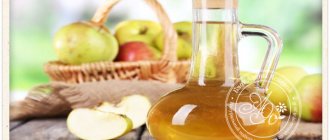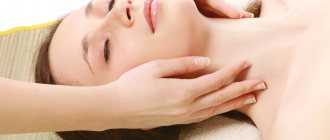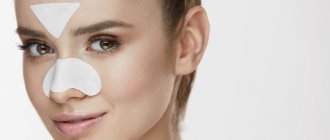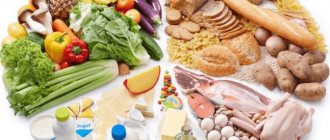Collagen
It is the most abundant structural protein in the body. Structural protein contains molecules that provide structure to various tissues in the body. Examples of such tissues include skin, bone, tendons and ligaments. As a person ages, the body produces less collagen. This can lead to problems such as wrinkles, loose skin and stiff joints.
Some foods contain proteins and nutrients the body needs to produce collagen. These proteins and nutrients are also available in the form of collagen supplements.
What is collagen?
According to an early review, collagen makes up one-third of all protein in the human body. Collagen forms connective fibers that provide structure and support to numerous tissues and organs in the body, including:
- skin
- blood vessel walls
- bones and teeth
- ligaments and cartilage
- internal organs
Collagen and elastin are important structural components of the skin. They help maintain skin smoothness and elasticity. As a person ages, these proteins decrease. This is one of the reasons why a person's skin begins to become looser and wrinkled with age.
In addition to maintaining youthful skin, people also need collagen for the following:
- wound healing
- recovery after bone fractures
- maintaining a healthy digestive tract
How to restore the balance of collagen and elastin?
Can we influence the process of protein metabolism? To some extent, yes. Of course, it is impossible to completely restore the synthesis of polypeptides, but stimulating the work of fibroblasts and slowing down the destruction of molecules is not so difficult.
Improving the production of your own collagen and elastin
In order to stimulate the formation of new protein compounds, it is necessary to provide the body with a sufficient amount of vitamins, microelements and amino acids.
The following substances will help increase the nutritional value of your diet:
- retinoids;
- vitamins C, F and E;
- trace elements (copper, zinc, sulfur).
If necessary, use dietary supplements containing hydrolyzed protein or a set of essential amino acids, as well as vitamin and mineral complexes and hyaluronate. Various cosmetic procedures will help to activate the formation of polypeptide compounds in the skin.
Advice. Don't neglect a healthy diet and proper skin care. These points are a necessary condition for increasing the synthesis of your own polypeptides.
Anthocyanidins contained in grape seeds and extract from the bark of maritime pine also restore the level of “youth proteins” well.
Drink for natural production of collagen and elastin
Products that stimulate the production of your own protein will help improve skin condition and support the body. You can use them to make a delicious and healthy cocktail of youth.
Components:
- a glass of strawberries and blueberries;
- 2 tbsp. l. chopped nuts;
- 2 tsp. flax seed;
- 1 tsp. cinnamon.
All ingredients should be thoroughly mixed in a blender, cooled and taken during breakfast.
Cream with elastin and collagen
Any polypeptide compound has a high molecular weight, which means it is physically unable to penetrate deep into the skin. Cosmetic manufacturers have tried to solve the problem with protein hydrolysate (a molecule broken down into peptides and amino acids).
However, even in such a fragmented state, the active substances are not able to penetrate deep into the dermis and can only work on the surface of the skin.
Despite this, cream with elastin and collagen brings considerable benefits:
- creates a film that prevents moisture loss;
- accelerates the healing of wounds and abrasions;
- improves the absorption of other components of the product;
- increases the elasticity of the dermis and tones it;
- rejuvenates tissues.
Apply the composition twice a day to previously cleansed skin of the face and neck. For best results, use a bioactive serum with collagen and elastin before the cream. Cosmetics of this form of release have a rich composition and have an excellent effect on the skin, moisturizing and strengthening the epidermis.
Advice. Use the facial serum in courses of 3-4 weeks. After a month, intensive care can be repeated.
One of the disadvantages of collagen and elastin cream is its cost. But if the product contains marine collagen, the high price is quite justified, since the substance, unlike cheaper animal protein, does not cause allergies and penetrates deeper into the layers of the epidermis. High-quality cosmetics can eliminate many age-related changes and prolong the youth of the skin.
The same can be said about collagen cream without elastin. Find out how to choose it correctly and what to pay attention to in this article.
Scientifically Proven Benefits of Collagen Supplements
Connective tissue health
Amino acids help boost collagen synthesis, and this can improve the health and function of connective tissues. A 2019 study examined blood amino acid concentrations after consuming various collagen and milk proteins and collagen-rich bone broth. The authors suggested that the release of amino acids promotes collagen formation in ligaments and tendons during exercise. The results showed that consumption of collagen proteins increased glycine content, and consumption of milk proteins increased leucine content. Bone broth resulted in a slower and longer-lasting release of amino acids compared to supplements.
One criticism of collagen supplements is that they are broken down and destroyed by acids and enzymes in the intestines. However, hydrolyzed collagen is chemically processed collagen that is easier for the intestines to digest. This means that it can remain in its intact form until blood carries it to the skin and joints.
Skin health
A 2020 study examined the effects of hydrolyzed collagen supplements on skin health and appearance in postmenopausal women. The supplements contained additional anti-aging ingredients, including hyaluronic acid, vitamins and minerals. The scientists concluded that the oral supplement significantly reduced the depth of wrinkles and resulted in a noticeable improvement in skin elasticity and skin hydration.
How to Replenish Lost Collagen?
Most people interested prevention of aging, know or have at least heard about collagen. Collagen is a protein that is a structural component of tissues such as skin, bones, and ligaments. The dermis, the middle layer of the skin, consists of collagen, which is found in it in the form of threads (fibers) and provides mechanical strength, density and elasticity to the tissue.
Unfortunately, collagen fibers are subject to wear and tear and quickly break down over time. Skin cells called fibroblasts are capable of producing collagen. As we age, our cells' ability to repair damaged collagen decreases. This process leads to the formation of wrinkles, changes in facial contours and skin tone.
To reduce collagen damage, it is necessary to neutralize damaging factors such as solar radiation, free radicals, age-related hormonal changes and smoking.
Let's consider the possibilities of replenishing lost collagen.
Collagen creams.
Creams containing collagen are usually expensive. In order for such collagen to even out wrinkles, it must penetrate the dermis. Unfortunately, collagen molecules are too large to penetrate the middle layers of the skin. Therefore, when using such creams, it is possible to achieve only superficial hydration of the skin, but it is impossible to restore the skin texture.
Transdermal systems.
Under natural conditions, the skin does not allow large molecules such as collagen to pass through (this protects the body from the development of allergic reactions). There are methods that allow large molecules to be introduced into the skin. For this purpose, substances are crushed (crushed), which facilitates their penetration. But this method often leads to the loss of some beneficial properties of biological molecules. To date, special systems have been synthesized, consisting of special “carriers” capable of binding collagen and introducing it into the deep layers of the skin. Therefore, creams containing transdermal systems, nanomolecules, have great restorative abilities. Collagen injections.
Collagen injections are performed under wrinkles, which leads to their filling and smoothing of the skin texture. Undoubtedly, this procedure has a pronounced cosmetic effect, it also has a number of disadvantages. Good results can also be obtained from injections of fibroblasts (cells that synthesize collagen) into wrinkles.
What to do to stimulate the production of your own collagen?
As we age, the skin undergoes a shift toward collagen breakdown. Cell stimulation aimed at collagen synthesis can significantly reduce wrinkles and restore skin tone. There are certain substances whose combined influence leads to stimulation of collagen production.
Vitamin C:
Vitamin C (ascorbic acid) is a necessary component for collagen synthesis. It should be remembered that only in certain daily doses, vitamins can have their positive effect. A lack of vitamin C leads to poor skin healing and bleeding gums. An excess leads to pathological healing and scar formation.
Amino acids.
Like other proteins, collagen is made up of amino acids (organic molecules). There are 20 types of amino acids. By saturating the body with essential amino acids, you can stimulate the formation of collagen.
Copper.
Some microelements are also necessary for collagen synthesis. One such mineral is copper. When copper levels increase inside cells, collagen synthesis increases. At the same time, copper is a potentially toxic metal. You should not consume more than 2 milligrams of a microelement daily. The use of inorganic copper is undesirable, since this form of copper leads to the accumulation of free radicals. To reduce the negative effects of the metal, an organic form of copper is used in connection with peptides (small protein fragments).
Growth factors and hormones.
Most cells in the body are influenced by signaling molecules such as growth factors and hormones. Under their influence, some skin cells more actively produce collagen. An example of the influence of these substances can be the skin of a child or young people, which is characterized by elasticity and increased tone. With age, the skin's ability to restore and renew itself decreases as the supply of growth factors is depleted. Skin tone also changes when hormonal levels in the body are disrupted.
Metalloprteinase inhibitors.
So far, we have looked at substances that can stimulate collagen synthesis. An alternative is the use of substances (metalloproteinase inhibitors) that inhibit collagen breakdown, a process that accelerates with age.
Thus, the easiest way to stimulate collagen synthesis is to use creams with vitamin C
or its derivatives.
Collagen Rich Foods vs Supplements
Collagen supplements are a convenient way for a person to increase their collagen levels. However, different supplements may contain different amounts of collagen. People should also consider that collagen supplements are usually obtained from the skin and bones of animals such as cows and pigs. As such, they are not suitable for vegans, vegetarians or people of certain religions.
Increasing your collagen levels by consuming a healthy and varied diet is likely to be safer and healthier. When a person consumes a healthy diet, they receive a variety of nutrients that provide a wide range of health benefits.
Healthy foods
The best way to stimulate natural collagen production is through food. If your diet is varied and healthy, you will avoid many health and beauty problems that you might otherwise face.
Here are some of the foods you should add to your diet to boost your collagen levels:
Blueberry
Blueberry
contains phytonutrients that strengthen collagen fibers. Ideally, you should consume
at least a glass of blueberries per week.
Garlic
Eating garlic can reduce joint pain.
In addition, garlic contains taurine, which fights damage to collagen fibers. This means that this product is an excellent product for prolonging youthful skin.
Experts recommend eating 1 clove of garlic per day. As for non-standard preparation methods, you can even add garlic to tea, but cinnamon and mint are usually added along with it to overcome the specific taste and aroma.
Eggs
Eggs are rich in natural amino acids, which are vital for collagen formation and should always be present in your diet.
Ideally, you should eat two eggs three times a week
. Try not to use too much salt or oil when preparing them.
Collagen and skin
Collagen and skin
The connective tissue part of the skin is its middle layer - the dermis, located under the epidermis. This is where collagen is located - the main component of the intercellular matrix of the dermis (it occupies 70-80% of its volume), which ensures the strength and elasticity of the skin. 95% of all collagen in the dermis is collagen types I and III.
Collagen in the skin is constantly renewed - old fibers are destroyed and new ones are formed. This process is chemically complex, multi-stage, requiring the intake of essential amino acids into the body, the participation of vitamins (C, PP, B6) and microelements (iron, copper). The synthesis of new collagen fibers is carried out by connective tissue cells (fibroblasts).
Disruption of the process of collagen synthesis at any stage (due to a genetic failure, lack of necessary amino acids, vitamins and microelements) will lead to the newly synthesized protein being defective.
The destruction of collagen fibers is carried out by special enzymes and free radicals. Collagen is a slowly exchanging protein, the duration of its functioning is measured in months.
But with age, the collagen content in the skin decreases, and the remaining collagen fibers change their appearance and begin to deform (which is associated with hormonal changes, decreased fibroblast activity, damage to fibers by free radicals and UV radiation, etc.). The first signal that collagen production is impaired is the appearance of non-expressive wrinkles.
Read more: “Collagen and elastin”








